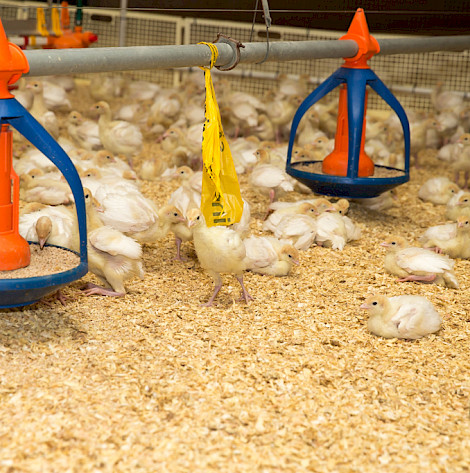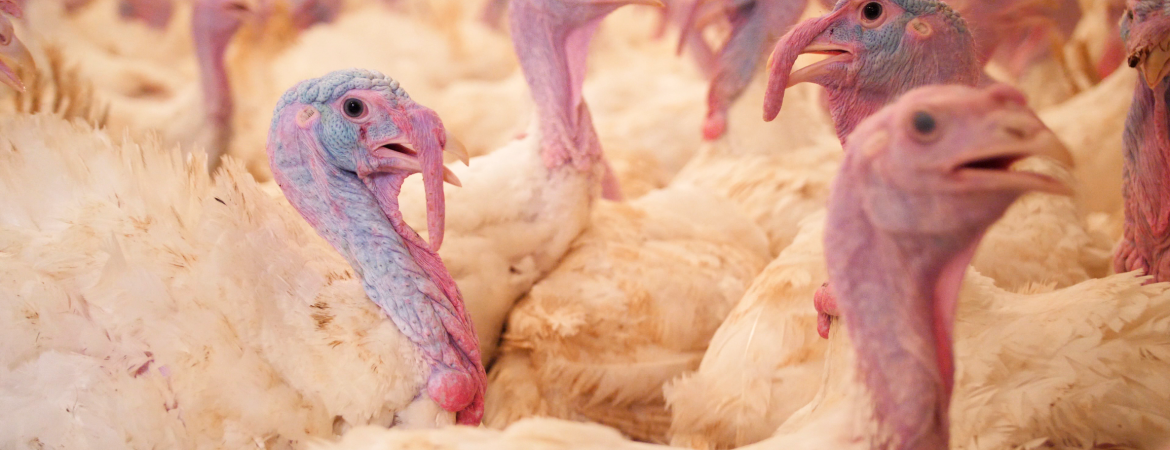
Turkeys have been raised in Finland since 1950. In 2024 148,7 million kg of poultry meat was consumed in Finland, of which 10.9 million kg was turkey meat.

Domestic turkey meat production in 2024 totaled 8.7 million kg and consumption was approximately 10.9 million kg. The share of imported meat in consumption was approximately 3.3 million kg and the domestic consumption rate was 64.5%. Finns ate an average of 2 kg of turkey per capita. Domestic turkey meat can be identified by the Hyvää Suomesta (Good from Finland) label.
Turkeys are raised on approximately 30 farms in Finland, three of which are quarantine farms specializing in raising young turkeys of the parent generation and three are turkey laying farms. The average size of the farms is approximately 10,000 turkeys. The parent generation chicks are imported to Finland from England. Imports are supervised by a health veterinarian, authorities and the Finnish Food Safety Authority. The eggs are laid in the laying farm, from which turkeys to be raised for food are hatched. Approximately 99% of domestic turkey meat production is contract production. In contract production, the production chain is carefully planned from the hatched egg to the store counter, and the meat's route from start to finish is traceable.
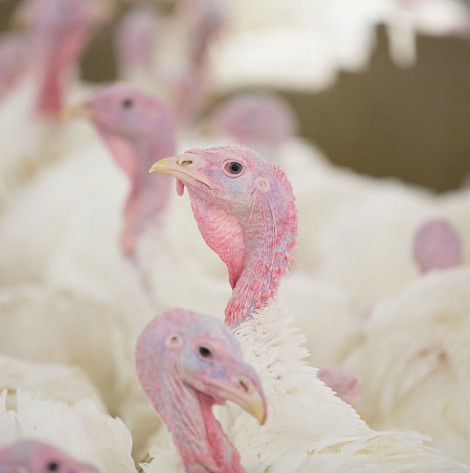
In the hatchery, the chicks are sex-sorted. On the breeding farms, hens and roosters are raised in separate groups. The rearing period for hens is approximately 14 weeks and for roosters approximately 17 weeks. When slaughtered, hens weigh approximately 9.5 kg and roosters approximately 17 kg. In Finland, the principle of single-stocking is implemented in turkey breeding, meaning that all birds in a breeding group arrive at the same time and leave at the same time.
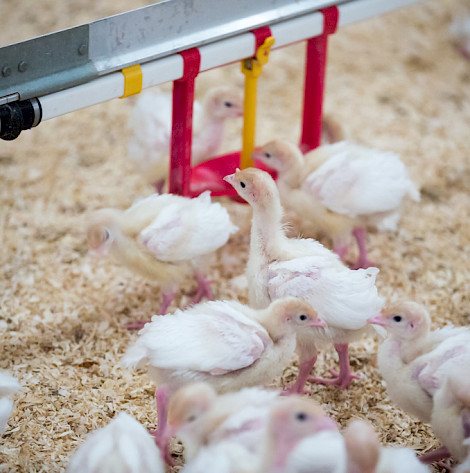
Turkeys are raised indoors in spacious halls on the floor on a bed of straw or peat, where they have the opportunity to exercise themselves. They are allowed to move freely without hindrance, explore their surroundings, bathe, eat feed and drink water. There are no windows in the turkey halls, but the circadian rhythm is controlled by lighting. The turkeys sleep at night in the dark, which lasts continuously until morning. Automation ensures suitable conditions for turkeys of different ages. Ventilation and heating ensure that the hall always has conditions suitable for the growing stage, fresh air and a suitable temperature. Small chicks need a temperature of 37 degrees and larger turkeys are comfortable at a temperature of 15 degrees. Good ventilation and heating also keep the bedding good and the birds healthy.
The turkey's rearing period is long, which poses challenges for breeding and requires iron-clad professionalism from breeders. The Finnish production method is based on the breeders' professionalism, high-quality feed, clean drinking water, optimal breeding conditions and good breeding practices. Only well-being and healthy birds produce good, high-quality meat. Birds in the production generation are rarely medicated, and even then only based on a diagnosis made by a veterinarian. Disease pressure is controlled by a careful risk assessment and disease protection measures taken on the basis of this. During the breeding period, producers monitor the breeding environment 24/7 and are constantly ready to react to potential problem situations.
The production method implemented in turkey production in Finland exceeds the requirements of legislation and the majority of breeders are committed to poultry welfare compensation.
The turkey chain follows a responsible production method, where production conditions and care support the health and well-being of the turkey. Production focuses on prevention and disease control so that the need for antibiotics remains low.
Healthy and versatile turkey meat is a safe choice. The quality of production is reflected in the well-being of the consumer, the producer and the entire chain. Finnish turkey does not carry salmonella, and it does not increase antibiotic resistance.
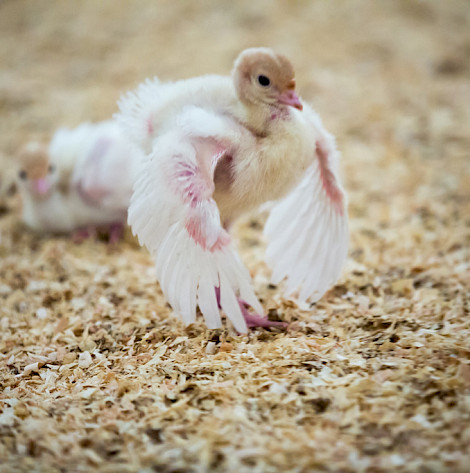
Resources such as water, energy and fields are used sustainably and using the best possible technology. Waste is minimized throughout the production chain. The use of domestic bioenergy, domestic grain in feed and the utilization of manure are circular economy at its best.
